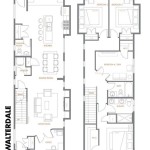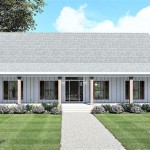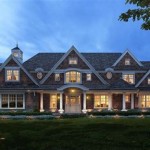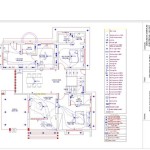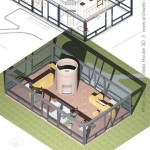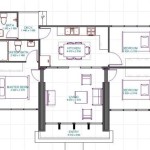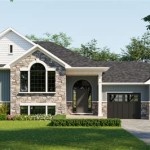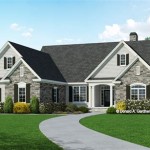Early American Colonial Home Plans: A Glimpse into the Past
Early American colonial home plans offer a unique window into the architectural styles and lifestyles of the 17th and 18th centuries. These homes, constructed by early European settlers, reflected the practical needs of a new land and the cultural influences of their origins. From the simple and functional designs of the first English colonists to the more refined and elaborate styles that emerged as settlements grew, early American colonial houses tell a story of adaptation, innovation, and enduring beauty.
The Influence of English Architecture
The early colonists who arrived in North America brought with them the architectural styles and building traditions of their homelands, primarily England. The first homes, often built with readily available materials like timber and stone, were modest in size and design, reflecting the practicality of life in a new and challenging environment. These structures, known as "saltbox" houses, were characterized by their simple rectangular forms, steeply pitched roofs, and single-story construction with a second story often extending over just part of the first. This design provided a practical solution for maximizing usable space and accommodating families.
As settlements grew and colonists became more established, their homes evolved to reflect a more refined sense of style and living. The Georgian style, influenced by English architect Sir Christopher Wren, emerged in the 18th century, introducing elements of symmetry and elegance. These homes featured two-story designs, balanced facades with central entrances, and decorative details like Palladian windows and dentil moldings. The Georgian style symbolized the growing prosperity and sophistication of colonial society.
Essential Features of Early American Colonial Homes
While individual designs varied, several common features characterized early American colonial homes:
1. Simple and Efficient Design: Colonial home plans prioritized functionality and practicality. Their rectangular forms, steeply pitched roofs, and limited ornamentation aimed to maximize living space, conserve heat in cold winters, and withstand the elements. 2. Central Hallways: As homes grew larger, central hallways provided a passageway for family members and servants. They also offered a sense of order and organization, separating public and private spaces within the home. 3. Open Fireplaces: Fireplaces were essential for heating and cooking in early colonial homes. They typically occupied a central position in the main living space, providing warmth and a focal point for family gatherings. 4. Small-Pane Windows: Colonial homes typically featured small-pane windows, often with multiple panes arranged in a grid pattern. These windows allowed limited light into the home but offered a sense of security and warmth, particularly during the colder months.
The Evolution of Building Materials and Techniques
Early colonial homes relied heavily on readily available materials like timber, stone, and brick. Timber framing, a technique that used heavy beams and posts to support the structure, was a common construction method. As settlements expanded, colonists began to experiment with new materials like brick and slate, which offered greater durability and fire resistance. The use of brick for chimneys and facades became more widespread, contributing to a richer architectural vocabulary.
The emergence of skilled craftsmen and the development of new building techniques led to the construction of more elaborate and aesthetically pleasing homes. The use of hand-hewn timber, intricate joinery work, and decorative details like cornices and moldings further enriched the architectural character of early American colonial homes.
The architectural legacy of early American colonial homes continues to inspire home design today. Their simple forms, timeless elegance, and enduring appeal reflect the ingenuity and resourcefulness of our nation's early settlers. These homes serve as a reminder of our nation's architectural heritage and offer invaluable insights into the history and culture of our past.

Colonial Early New England Homes

Floor Plan Prints Early American Colonial Home Plans Design No House Vintage

Colonial House Plans Blueprints

House Plan The Charm Of Early American Ladies Home Journal Design No 388 1935 Typical Eastern Pennsyl Stone Plans Vintage

Early American Colonial Home Plans By National Plan Service Open Library

Vintage House Plans Early Colonial

Home Plans Ser 3a Colonial Houses 175 Early American Designs By Planners 281998 2c Trade Paperback 29 For

American Residential Architecture House Plans 1929 Home Builders Catalog Garrison Colonial Reviva Vintage

Radford 1903 Early Dutch Colonial Revival Unusual Dormers House Plans

Early American House Floor Plans Historic Homes Brand

